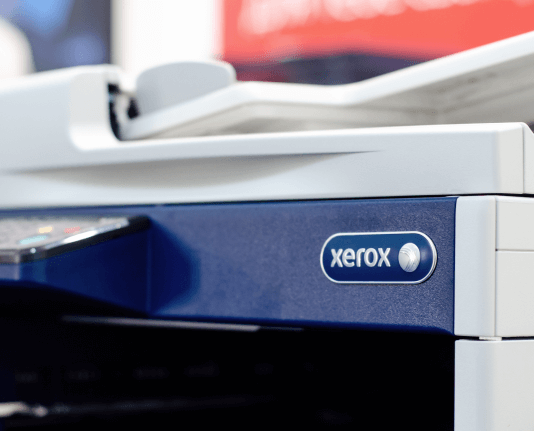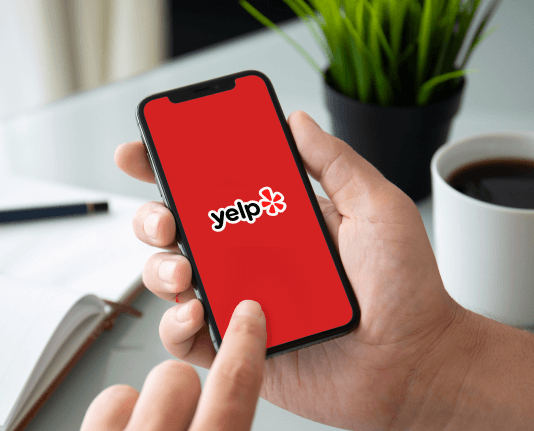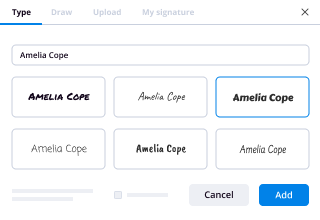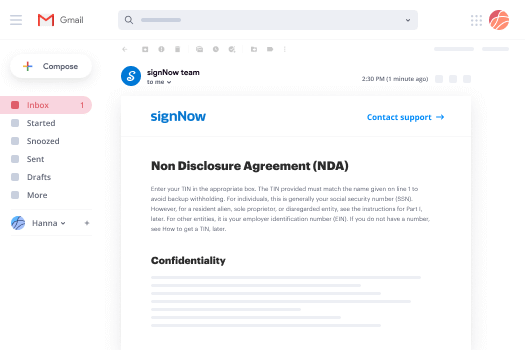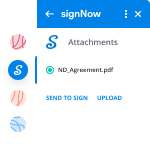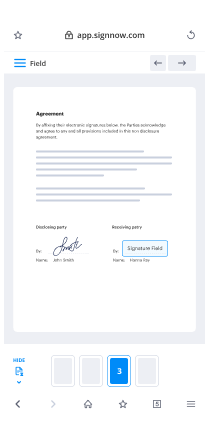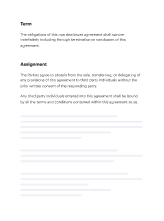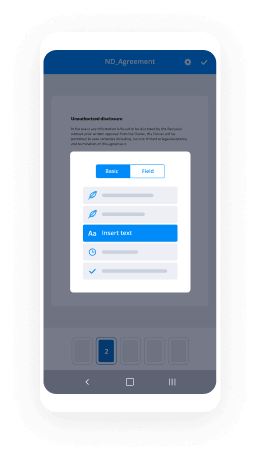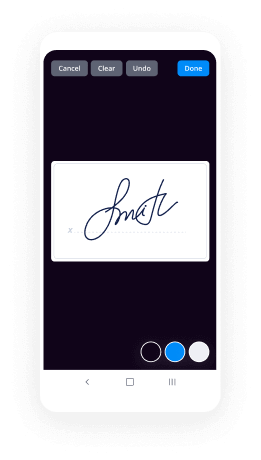eSignature Presentation for IT Computer
Make the most out of your eSignature workflows with airSlate SignNow
Extensive suite of eSignature tools
Robust integration and API capabilities
Advanced security and compliance
Various collaboration tools
Enjoyable and stress-free signing experience
Extensive support
Keep your eSignature workflows on track
Our user reviews speak for themselves






Advantages of Utilizing airSlate SignNow for IT Computing
In the contemporary digital landscape, adopting the appropriate tools is vital for enterprises to succeed. airSlate SignNow provides a formidable solution for electronic document signing and management that streamlines the signature acquisition process. This manual highlights the primary advantages of employing airSlate SignNow, especially for individuals in the IT computing field.
Steps to Utilize airSlate SignNow for IT Computing
- 1
- Launch your web browser and go to the airSlate SignNow main page.
- 2
- Set up a complimentary trial account or log in if you already possess one.
- 3
- Choose the document you intend to sign or send for signatures.
- 4
- If you intend to use this document regularly, save it as a template for subsequent use.
- 5
- Open your document to make necessary modifications, such as adding fields that can be filled or inputting information.
- 6
- Sign your document and assign fields for the signatures of your recipients.
- 7
- Press 'Continue' to complete the process and dispatch your eSignature request.
Utilizing airSlate SignNow offers numerous benefits for companies, particularly those in the IT computing sector. It delivers a comprehensive feature set that guarantees an excellent return on investment, rendering it a cost-effective option for document management.
Adopt the efficiency that airSlate SignNow provides and revolutionize your document signing process today! Initiate your free trial now and enjoy seamless eSigning with unparalleled assistance.
How it works
Rate your experience
-
Best ROI. Our customers achieve an average 7x ROI within the first six months.
-
Scales with your use cases. From SMBs to mid-market, airSlate SignNow delivers results for businesses of all sizes.
-
Intuitive UI and API. Sign and send documents from your apps in minutes.
A smarter way to work: —how to industry sign banking integrate
FAQs
-
What is airSlate SignNow and how does it relate to i t computer services?
airSlate SignNow is a powerful eSignature solution that allows businesses to send and electronically sign documents efficiently. By integrating seamlessly with i t computer systems, it streamlines workflows and enhances productivity. This tool is designed for users who want to simplify their document management processes using reliable i t computer technology.
-
How much does airSlate SignNow cost for businesses using i t computer systems?
The pricing for airSlate SignNow is competitive, starting with various plans to meet the needs of different businesses. For companies leveraging i t computer solutions, the subscription costs are designed to be cost-effective, ensuring that you get maximum value without compromising on features essential for your operations.
-
What features does airSlate SignNow offer for i t computer users?
airSlate SignNow boasts a range of features perfect for i t computer users, including customizable templates, advanced security options, and real-time tracking of document status. These features ensure that your eSigning process is not only efficient but also secure, which is crucial for businesses relying on i t computer infrastructure.
-
Can airSlate SignNow integrate with existing i t computer systems?
Yes, airSlate SignNow is designed to integrate seamlessly with various i t computer systems and applications. This means you can connect it to your existing software tools, enhancing your workflow without the need for extensive changes to your current setup.
-
What are the benefits of using airSlate SignNow for i t computer applications?
Using airSlate SignNow with your i t computer applications offers signNow benefits, such as increased efficiency, reduced paperwork, and improved compliance. The convenience of electronic signatures accelerates document turnaround time, allowing your team to focus on more critical tasks.
-
Is airSlate SignNow secure for businesses focused on i t computer security?
Absolutely! airSlate SignNow prioritizes security, utilizing advanced encryption and compliance with major regulations to protect your data. For businesses invested in i t computer security, this means you can trust that your documents are safe and only accessible to authorized personnel.
-
How can airSlate SignNow improve collaboration in i t computer teams?
airSlate SignNow enhances collaboration among i t computer teams by allowing multiple users to sign and share documents in real-time. This feature reduces delays and fosters a more collaborative environment, enabling teams to work together more effectively, regardless of their physical location.
-
What is the best real estate technology?
A survey conducted by Coldwell Banker and CNET found that eighty-one percent of prospective home buyers were drawn to homes equipped with the latest in-home technology. Among those, thirty-five percent of people who preferred what is known as smart homes over traditional residences believed that such features solidified the property as “move-in ready.”Technology is also changing the field of home selling. Here are five ways that apps and other online features are making the life of a real estate agent easier.1. Broadcasting with Periscope and TwitterWhat better way to send out a massive blast than on Twitter? The social media site lets you keep it short but sweet as you tell followers that the home of their dreams has an upcoming open house session. You can also post pictures on Twitter that give potential buyers a better perspective of what they will see during their in-person tour of the property. Take the virtual showing a step further by using Periscope to share live footage of yourself walking through the house online. In past times, a substantial amount of money was necessary to promote property by way of commercials. Twitter and Periscope bring the perk to you for free so long as you have a smartphone or tablet when going live and taking pictures.2. Tracking with Glympse and WazeRunning twenty minutes behind used to be a deal breaker pre-Digital era. Not only did you inconvenience the client but you also provided a guess that was often inaccurate and led to more time wasted at the property. Traffic apps in the twenty-first century have made such estimating unnecessary.Waze is one app that provides navigation tips based on real-time traffic information. You can better coordinate appointments so that clients are not left waiting for several minutes and provide clearer updates when you are running late. Glympse also tracks traffic in real-time but takes things a step further by offering a link by which clients can track your whereabouts. Text or email the URL to prospective buyers and let them follow along as you make your way to the location.3. Meet Online with Reflector 2 and Join.meReal estate agents should consider investing in Reflector 2 instead of bringing their USB stick along to nail that next listing presentation. The app serves as a sort of projector by allowing you to cast all activity on your smartphone and tablet on a larger screen. The Reflector 2 works with nearly any device and does not require additional purchase outside of the app itself.Free Screen Sharing, Online Meetings & Web Conferencing is another app that has made buying a selling a home more convenient. Agents can hold brief meetings with clients without requiring them to come into the office. Sharing your computer screen is the best way to convey pertinent information to new homeowners. The recording and playback feature is particularly useful when you need to recall a client’s home preferences. They will be impressed with your attention to detail in finding a house with a built-in barbecue pit. You will know that such meticulousness is because of Free Screen Sharing, Online Meetings & Web Conferencing.4. Add Transparency and Rapidity with an Automated Mortgage Loan ProcessThe traditional method of the home loan process involved hours spent trying to secure financing. Leaving one paycheck stub or bank statement at home often meant holding off on the process until the client was able to furnish proof of such documentation. There was no transparency in the process, which meant that customers were entirely reliant on the expertise of the real estate agent.Technological advances have revolutionized the mortgage loan process. Automated processing now establishes criteria by which applicants are judged that makes applying simpler. Some financial institutions can pre-approve hopefuls in ten minutes. Individuals who go through the entire process may see their loans finalized in ten days instead of the average four-week period. Digital tools provide real-time updates so that even those who are not approved can move on to the next bank quickly instead of waiting for a rejection letter to arrive by way of snail mail.5. Agree from Home with E-signaturesIn past times, the thrill of closing quickly became inconvenient for buyers upon hearing that all approved owners would need to stop by the real estate agent’s office to sign final documents. Some individuals were forced to take a sick day from work just to make their mark on the paper. Such heartache is why the masses are thrilled to learn that e-signatures have the same weight as traditional marks on legal documents. A real estate agent can email paperwork that his clients can sign at their leisure and return electronically. It is even possible to solidify documents on a smartphone in some instances, which makes the home loan process that much more convenient.
-
What digital tool, as a real estate agent, do you most use?
As an agent, we have access to the MLS, which the public only has limited access to. In my area the public can see exactly what Zillow can which is active listings. Our board does not disclose the sales price of closed prices, which makes services like Zillow pretty much worthless in my area. (Zillow may be useful in some areas, perhaps many, just not where I work).That said, my favorite and most useful tool, which is also available to the public, is the GIS (Government Information Service). Type in to Google: (Your county)(Your state) GIS [ie: Marion County Indiana GIS ] . While it isn’t available in every county of the country, you will find it in most major areas. It will give you access to the tax assessor records and often times the sales history of the property. The tax records will give you the details of site size, improvements, assessed values and depending on the county may or may not give you the annual taxes.Since real estate agents in some areas count the basement area when they list the size of the property, the GIS will allow me to figure out what is really there if I’m new to the area. For what I am looking for, there is a signNow difference between a stated 3,600 square foot house by the agent and 1,800 square foot above ground over a 1,800 square foot basement. - Lenders only count the above ground square footage as living area when making a loan.Hope this helps.
-
How are cracked versions of software created and why are developers not able to prevent it?
Cracked versions of software are created with the use of debuggers. (A debugger is a special type of software that lets programmers deconstruct their software into its constituent parts for the purpose of finding bugs, and thus de-bugging. Additionally debuggers can be used for reverse-engineering, or to see what is inside the software, to learn its logic. The latter method is used mostly by malware researchers to study what malware (or computer viruses) do on-the-inside. But it can be also used by an attacker to "crack" (or bypass) legal software registration, or at times, to alter normal behavior of software, for instance by injecting a malicious code into it.)For the sake of this example, I will assume that the software that is being "cracked" was compiled into a native code, and is not a .NET or a JavaScript based application. (Otherwise it will be somewhat trivial to view its source code.) The compiled native code is a bit more tricky "beast" to study. (Native means that the code executes directly by the CPU, GPU, or other hardware.)So let's assume that the goal of an attacker is to bypass the registration logic in the software so that he or she doesn't have to pay for it. (Later for lolz, he or she may also post such "crack" on some shady online forum or on a torrent site so that others can "use" it too and give him or her their appreciation.)For simplicity let's assume that the original logic that was checking for the software registration was written in C++ and was something similar to the following code snippet:In this code sample "RegistrationName" and "RegistrationCode" are special strings of text that a legitimate software user will receive after paying for the license. (The name is usually that person's actual name or their email address, and the code is some string of unique/special characters that is tied to the name.)In the logic above, the function named "isRegistrationCodeGood()" will check if "RegistrationName" and "RegistrationCode" are accepted using some proprietary method. If they are, it will return true. Otherwise false. That outcode will dictate which branch (or scope) the execution will follow.So the logic above will either show that registration failed and quit:Or, if the registration code and name matched, it will save the registration details in persistent storage (such as the File System or System Registry) using the function named "rememberRegistrationParameters()" and then display the message thanking the user for registering:A "cracker" will obviously want to achieve the second result for any registration code that he or she enters. But they have a problem. They do not have the C++ source code, part of which I showed above. (I hope not!)So the only recourse for an attacker is to disassemble the binary code (that always ships with software in the form of .exe and .dll files on Windows, and mostly as Unix executables inside the .app packages on a Mac.) An attacker will then use a debugger to study the binary code and try to locate the registration logic that I singled out above.Next you can see the flowchart for a snippet of code that I showed in C++, presented via a low-level debugger. Or, as the code will be read in the binary form after compilation:(For readability I added comments on the right with the names of functions and variables. They will not be present in the code that an attacker could see.)(To understand what is shown above an attacker will have to have good knowledge of the Assembly language instructions for the native code.)I also need to point out that having a disassembly snippet like the one above is the final result for an attacker. The main difficulty for him or her is to locate it among millions and millions of other similar lines of code. And that is their main challenge. Not many people can do it and that is why software "cracking" is a special skill.So having found the code snippet above in the software binary file a "cracker" has two choices:1) Modify (or patch) the binary.2) Reverse-engineer the "isRegistrationCodeGood()" function and copy its logic to create what is known as a "KeyGen" or "Key Generator."Let's review both:The first choice is quite straightforward. Since an attacker got this far, he or she knows the Intel x64 Instruction Set quite well. So they simply change the conditional jump from "jnz short loc_7FF645671430" at the address 00007FF645671418 (circled in red in the screenshots) to unconditional jump, or "jmp short loc_7FF645671430". This will effectively remove any failed registration code entries and anything that the user types in will be accepted as a valid registration.Also note that this modification can be achieved by changing just one byte in the binary code from 0x75 to 0xEB:But this approach comes with a "price" of modifying the original binary file. For that an attacker needs to write his own "patcher" (or a small executable that will apply the modification that I described above.) The downside of this approach for an attacker is that patching an original executable file will break its digital signature, which may alert the end-user or the vendor. Additionally the "patcher" executable made by an attacker can be easily flagged and blocked by the end-user's antivirus software, or lead criminal investigators to the identity of the attacker.The second choice is a little bit more tricky. An attacker will have to study "isRegistrationCodeGood()" function and copy it into his own small program that will effectively duplicate the logic implemented in the original software and let him generate the registration code from any name, thus giving any unscrupulous user of that software an ability to register it without making a payment.Vendors of many major software products understand the potential impact of the second method and try to prevent it by requiring what is known as "authentication." This is basically a second step after registration, where the software submits registration name to the company's web server that returns a response back to the software of whether the code was legitimate or not. This is done by Microsoft when you purchase Windows (they call it "Activate Windows") and also by signNow, and many other companies. This second step may be done behind-the-scenes on the background while the software is running, and will usually lead to cancellation of prior registration if it was obtained illegally.So now you know how software is "cracked".Let me answer why it is not possible to prevent it. It all boils down to the fact that any software code needs to be read either by CPU (in case of a binary native code) or by an interpreter or a JIT compiler (in case of JavaScript or .NET code.) This means that if there's a way to read/interpret something, no matter how complex or convoluted it is, an attacker with enough knowledge and persistence will be able to read it as well, and thus break it.There is an argument though that cloud-based software is more secure, which is true, since its (binary) code remains on the server and end-users do not have direct access to it. And even though cloud-based software is definitely the future, it has some major drawbacks that will never allow it to fully replace your conventional software. To name just a few:Not everyone has an internet connection, or is willing to upload their data online. Additionally someone’s internet connection can be very expensive or too slow to make the software run very laggy.Then there’s a question of distributed computing. For instance, Blizzard Entertainment would never make “World of Warcraft” to fully run on their servers due to immense computational resources needed to render every single scene for every player they have. Thus it is in their best interest to let each individual user’s computer to do the rendering instead.As a software developer myself, I obviously don't like when people steal software licenses. But I have to accept it and live with it. The good news is that there are not that many people who are willing to go extra mile and search for a cracked version of software. The main problem for those who do, is that by downloading a patched executable, or an attacker's KeyGen or a Patcher, they are effectively "trusting" him or her not to put anything "nasty" into it that was not "advertised on the package" (stuff like trojans, malware, or keyloggers.) So the question for those people becomes -- is it worth the cost of the software license to potentially infect your system with a nasty virus?On the other side of the equation, some developers react very negatively to any attempts to steal their software licenses. (I was there too.) They try to implement all kinds of countermeasures -- anything from tricking reverse-engineers, to adding booby traps in the code that may do something nasty if the code detects that it is being debugged, to obfuscating or scrambling the code, to enforcing all kinds of convoluted DRM schemes, to blocking users from certain countries. I personally try to stay away from all of those measures. And here's why:A) Any kind of anti-reverse-engineering tactics could be bypassed by an attacker with enough persistence. So why bother and waste my time when I can invest that time into adding something useful to my software that will make it more productive for legitimate users?B) Some code packers could create false positives with antivirus software, which is obviously not good for marketing of that software. It also creates unnecessary complexity for the developer to debug the software.C) Adding booby traps in the code can also “misfire” on your legitimate users, which will really infuriate them and can even lead to lawsuits.D) Any DRM scheme will probably catch some 100 illegal users and greatly inconvenience 10,000 legitimate ones. So why do it to your good customers?E) Our statistics show that about 75% of all illegal licenses come from China, Russia, Brazil, to name the worst offenders. (I also understand that the reason may be much lower incomes that people have in those countries.) The main issue for us though was the fact that if we enforce our DRM or add some strong registration authentication, many people that wanted to bypass our registration would simply use a stolen credit card number. And we had no control over it. Our system will use it to send them a legitimate license only to have the payment bounce in weeks time. As a result we would lose the money that were paid for the license, plus the credit card company will impose an additional chargeback fee to our account, which may range from $0.25 to $20 per bad purchase on top of the license cost.F) As was pointed out in the comments, some companies may actually benefit from allowing pirated copies of their software. Microsoft for instance gets a lot of free publicity from people using their Windows OS, the same goes for signNow with their Photoshop. That is a good point that I agree with.So my philosophy is now this -- if someone wants to go extra mile and steal our software, go for it! They went this far to do it anyway, so they probably have a good reason. On the positive side there are so many other customers that appreciate the work that goes into creating software that greatly outnumber those that don’t.PS. Thank you for all your feedback! It makes me feel good that the knowledge I shared is useful to others.
-
Is ticking a check box for an online contract like a signature in the USA?
In the U.S., ticking a checkbox routinely is considered evidence showing that a user has accepted online terms and conditions. (Please see Online Terms can be Binding, even if You don’t have to Click!)This is, indeed, similar to a signature on a hard-copy contract being evidence showing that a party has agreed to that contract.
-
What industries must use electronic signature software?
Any industry involving a large amount of paperwork make use electronic signatures. In other words, all industries make use of electronic signatures because all of them have piles of paperwork to handle. Some examples of such industries include financial, life science, healthcare and pharmaceutical industries.Industries such as the pharmaceutical industry, have a number of licenses and other paperwork that they have to handle and keep track of. It can be a tedious task to perform such cumbersome paper processes. Therefore, e-signatures can facilitate an organisation in keeping a track of all this paperwork, by signing electronically.Healthcare industries usually involve time-sensitive documents, which need to be urgently completed. But, it can take days in case of the traditional wet ink paper signatures for the documents to signNow the signer and back, if the parties are geographically scattered. But with electronic signatures, that is not the case. Geographical barriers do not play a role. Documents which earlier needed days to be completed, can now be signed and sent back within minutes, in the click of a button. Furthermore, it takes a long time to bring assets under management. The time taken by the signing process, if wet ink paper signatures are used, may even further delay the process. But by using electronic signatures, the whole process can speed up.Apart from these, there are many paper prone industries which require huge amount of paperwork and with the use of electronic signatures they can make their everyday processes smoother and more efficient.
-
How does e-voting work in Estonia?
Those who have card readers at home (to be used with ID-cards) or mobile ID (used, among other things, for bank payments) will log in using their ID to a designated website, pick a candidate, click a few mouse clicks, and done.To ensure anonymity of voting, the hardware used for particular elections will then be publicly destroyed after the votes are counted (the electronic votes are normally taken some days before the physical votes, which sort of gives away some voting tendencies in advance). Still, it doesn’t stop the public from ever wondering each time elections come up about the anonymity and possible abuse of the system. Cases have been known where some heads of households would gather all ID cards of the family (especially old grandparents) and vote for whomever they chose.In recent elections, about 30 per cent of all active voters voted electronically. I know some people who never use this option for fear that records may remain. I personally fluctuate between voting electronically (“Meh, too lazy to go outside today”) and physically (“Elections day, come on family, time to do our citizen duty and have a nice walk!”).Update: just received my new ID card this week, and the envelope with the card reminds me when the next elections happen and encourages me not to waste my vote.
-
How do I know if the title record(TCT) in Philippines is true or not?
Taken from philpropertyexpert.comBelow are the items you should look for in the contents of the title you are checking:If it’s an Original Certificate of Title (OCT), it should indicate “Judicial Form No. 108-D” at the top.If it’s a Transfer Certificate of Title (TCT), it should indicate “Judicial Form No. 109-D“The serial number label (SN No.) should be in red color, while the digits should be in black for the owner’s duplicate.The last two digits of the page number in the upper right hand side should correspond to the last two digits of the TCT number.The red/blue border should be slightly embossed and not flatly printed.For e-Titles, all entries should be computer encoded and printed, unlike the old versions which were manually type-writtenThe seal on the lower left hand side should be dark red and does not blot when a litle water check is done.Signatures:for Judicial OCT, it should have 2 signatures present – the Administrator and the Registrar; while for TCT, only the signature of the Registrar is present.For Administrative Titles: one signature from a PENRO or CENRO officer and another from the registrar.KEY TAKEAWAYSWhen it comes to transactions involving any kind of real estate, the money involved is usually considerable, if not a serious amount. So you’ll have to be careful, especially when you’re dealing with strangers. Keep in mind the above items and look for them in a land title that is presented to you. If the title does not pass this simple test, then you have saved yourself a lot of trouble, time and money; You don’t have to do further verification anymore since you already know it’s fake.However, please also note that even if the title passes this first and immediate test, you still can’t be 100% sure that it is authentic, until you verify it with the LRA, the Registry of Deeds and the concerned local offices of the Municipality where the property is located.
-
What is the best invoicing app for small businesses?
SeisoRidh-Billing Acoounting Softwarefor demo click hereKey Features:Multiple Business/Shops:Set up multiple businesses in the application.No restriction on numbers of businesses.Inventory & accounting information is kept separately for each business.Add Location / Storefronts / Ware House:Create multiple locations for your business/shopManage all of them at the same time.Stocks, Purchases, Sell can be tracked differently for locations.Customize invoice layout, invoice scheme for each locationUser & Role Management:Powerful user and role management systemPredefined roles – Admin & CashierCreate different Roles with permission as per your need.Create unlimited users with different roles.Contacts (Customer & Suppliers):Mark contact as customer or supplier or both(customer & Supplier)View details of transactions with a contact.View total of Credit/Debit balance amountDefine pay term and get payment alerts week before the due date.Products:Manage Single & Variable products.Classify products according to Brands, Category, Sub-Category.Add products having different unitsAdd SKU number or auto-generate SKU number with prefixes.Get stock alerts on low stocks.Save time by auto calculating selling price, the system is smart to auto calculate selling price based on purchase price and profit margin.No need to type variations every time, create variation template and use it everytime you need to create variable products.Purchases:Easily add purchases.Add purchase for different locations.Manage Paid/Due purchases.Get Notified of Due purchases week before the pay date.Add discounts & TaxesSell:Simplified interface for selling productsDefault Walk-In-Customer automatically added to a businessAdd new customer from POS screen.Ajax based selling screen – save reloading time.Mark an invoice for draft or final.Different options for payments.Customize invoice layout and invoice scheme.Manage Expenses:Easily add business expensesCategorise expensesAnalyse expenses based on category and business locations with expenses report.Reports:Purchase & Sale reportTax ReportContact ReportsStock ReportsExpense ReportView Trending Products, drill down by Brands, Category, Sub-category, Units and date rangesOther useful feature:Set currency, timezone, financial year, the profit margin for a business.Translation ready.Predefined barcode sticker settings.Create your barcode sticker settingManage Brands, Tax Rate & Tax groups, Units, Category & Sub-CategoryEasy 3 steps installation.Detailed documentation
Trusted esignature solution— what our customers are saying
Get legally-binding signatures now!
Related searches to eSignature Presentation for IT Computer
Frequently asked questions
How do i add an electronic signature to a word document?
How to scan and save an electronic signature?
How to code an email electronic signature for business use?
Get more for eSignature Presentation for IT Computer
- Can I Implement Electronic signature in WorkDay
- Can I Implement Electronic signature in Google Drive
- How Do I Set Up Electronic signature in Egnyte
- How Do I Implement Electronic signature in ServiceNow
- Can I Set Up Electronic signature in Egnyte
- How Do I Set Up Electronic signature in G Suite
- Help Me With Set Up Electronic signature in G Suite
- How Do I Implement Electronic signature in NetSuite
Find out other eSignature Presentation for IT Computer
- Drug characterization ppt form
- Presidential bursary application form
- Chp 555 03 form
- Xxnaivivxx back to school giveaway pdf download youtube form
- Oregon lodging tax quarterly return 3rd quarter 150 604 002 3 oregon form
- My mta portal form
- Energy vocabulary quiz form
- Zigzag book template form
- Sathyabama university transcript form
- Assumption of duty form department of education 407232524
- Hazardous waste form
- Shoe rally fundraiser form
- Hld score sheet form
- Braverman test form
- B709a form
- Inkomsten uitgaven formulier downloaden
- Fatca declaration emirates nbd form
- Zcck online form
- 40e permit form
- Sworn statement sample 38179173 form

